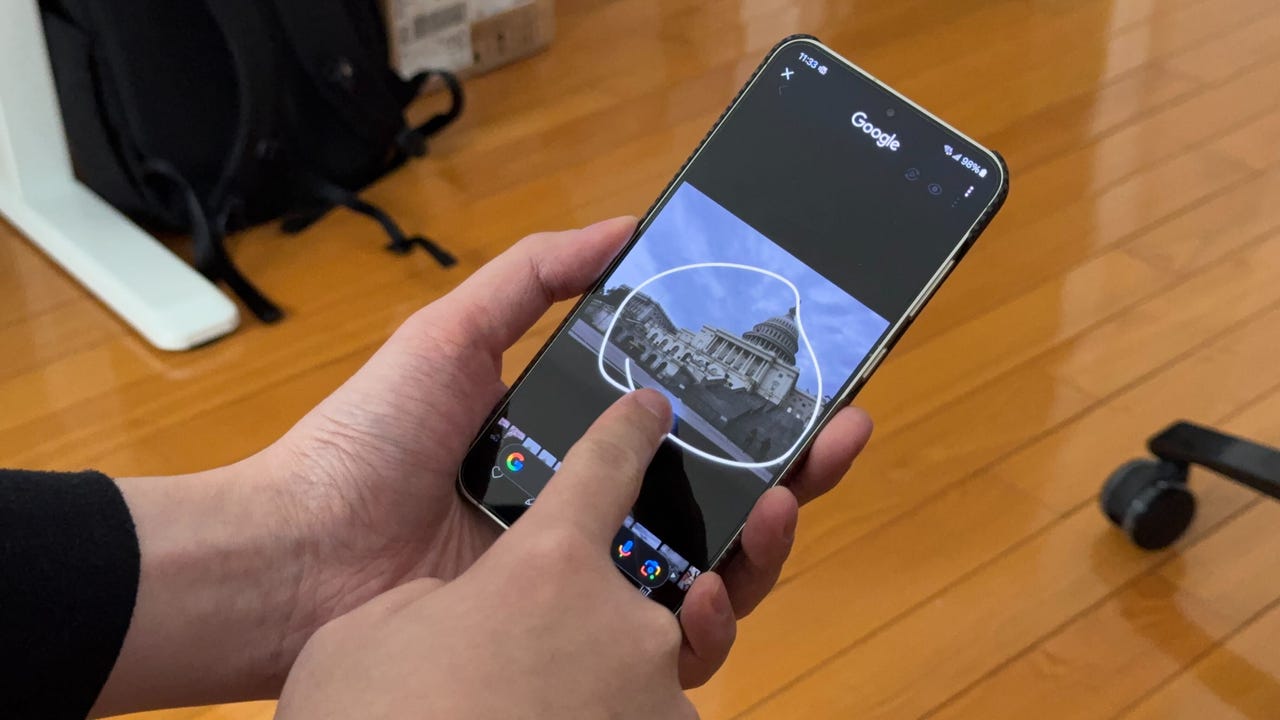Google’s Circle to Search, a groundbreaking visual look-up tool powered by Artificial Intelligence (AI), is on the verge of a significant expansion. Initially exclusive to Google Pixel and Samsung Galaxy smartphones, this feature is now set to become available on a broader range of Android devices. Here's everything you need to know about this exciting feature, its potential benefits, and how it will transform the way we interact with our smartphones.
What is Google Circle to Search?
Launched in January 2024, Circle to Search is a visual search tool that lets users easily look up any object, text, or image on their phone by circling it on the screen. Built on the power of AI and Google Lens, this tool simplifies how users conduct searches, offering a more intuitive and visually engaging experience. For example, if you are browsing a webpage, watching a video, or even viewing a photo, you can simply draw a circle around any object or text to initiate a search.
Unlike traditional searches that require typing, Circle to Search creates a more seamless interaction with the digital world. By identifying objects visually and providing results almost instantly, it gives users faster access to relevant information, shopping links, or contextual knowledge.
Expansion Beyond Pixel and Samsung Devices
Since its debut, Circle to Search was exclusively available on Google’s Pixel series and Samsung Galaxy S24 models. However, according to a reliable source on X (formerly Twitter), this exclusivity is about to end. In a post by @MishaalRahman, it was revealed that Google is planning to expand the feature to more Android phones as early as next month. This means users of OnePlus, Xiaomi, Oppo, Motorola, and other Android brands could soon enjoy this useful AI-powered tool.
Moreover, this expansion will make the feature accessible to a larger portion of Android users, ending its limited availability. Reviews have also hinted that the TECNO Phantom V Fold 2 may be one of the next devices to support this feature, although official announcements are still pending.
How Does Circle to Search Work?
The core functionality of Circle to Search revolves around simplicity and flexibility. Here’s a breakdown of how it works:
Visual Search: Users can draw a circle around any object or text on their screen, and the AI tool will identify it. For example, if you are reading an article and see a word you want to know more about, simply draw a circle around the word, and a search will instantly begin.
Flexible Interactions: Aside from circling, users can also scribble or tap to initiate searches. Google's AI is built to automatically recognize the most relevant objects or text and start a search accordingly.
Seamless Integration: The feature is integrated into the phone’s user interface. By pressing the home button or navigation bar, users can instantly activate Circle to Search, allowing for a convenient, fluid user experience.
Recent Updates and Music Recognition
In addition to its original functionality, Google has recently enhanced Circle to Search by adding music recognition capabilities. Now, if a song is playing in your environment or on your device, Circle to Search can identify the track with ease. This feature reflects Google’s commitment to making Circle to Search not only a tool for visual recognition but also an all-in-one search assistant that handles a variety of queries—both visual and auditory.
Benefits of Circle to Search for Everyday Users
The expansion of Circle to Search to more devices opens the door for a much broader audience to experience the benefits of this innovative tool. Here are some of the key advantages:
Fast Information Retrieval: Circle to Search speeds up the process of finding relevant information on the internet. Whether you’re curious about a product, a place, or a person, you can find detailed information in seconds.
Simplified Visual Interactions: Instead of typing long queries or descriptions into Google, Circle to Search uses AI to automatically detect objects or text, making the search process more user-friendly.
Enhanced Shopping Experiences: For those who love online shopping, the feature makes it easier to identify products from images, find purchase links, and compare prices across different platforms.
Accessibility: Circle to Search could also be beneficial for individuals with physical limitations or those who prefer voice or gesture commands. Its intuitive nature allows for easier interaction with digital content without needing precise typing or swiping.
Will Circle to Search Come to iPhones?
While Circle to Search is making its way to a broader range of Android devices, there’s no official word yet on whether Apple plans to introduce a similar feature for iPhones. Given the growing competition in the mobile search market, it would not be surprising if Apple introduces its own version in the future, but for now, Android users have the advantage.
What’s Next for Google Circle to Search?
Google’s push to expand Circle to Search reflects a broader trend in smartphone technology towards AI-driven features that make interacting with devices more natural and intuitive. As the feature grows in popularity and becomes available on more phones, we can expect Google to continue enhancing its capabilities, possibly introducing new features like augmented reality integration, deeper AI insights, or more advanced cross-app functionality.
The expansion of Circle to Search also raises questions about the future of AI-powered visual search tools in general. As Google, Apple, and other tech giants continue investing in these technologies, we are likely to see more advanced search experiences that blend AI, machine learning, and visual recognition in ways that transform how we interact with the world through our devices.
This article is based on factual information available on third-party websites, which has been carefully confirmed and verified during the research process. It is recommended to check any required information. I do not hold any rights over the used image; it is sourced from ZDNet via Google Images truly AI-generated.





.png)
0 Comments